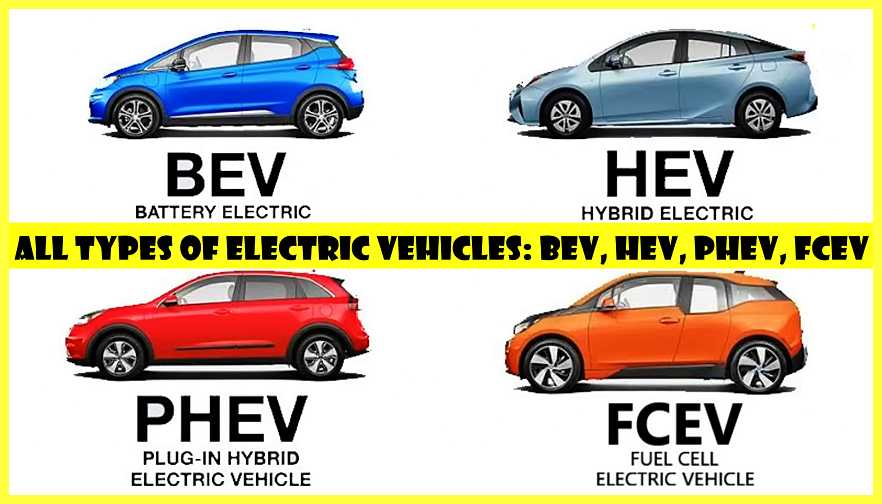All Types of Electric Vehicles (BEV, HEV, PHEV, FCEV)
Table of Contents
Here is the list of All Types of Electric Vehicles (BEV, HEV, PHEV, FCEV) When it comes to electric vehicles, the options available go far beyond those powered just by batteries these days; they now include options that use fuel cells or combine a gas engine in hybrid and plug-in hybrid vehicles. There are four main types of electric cars available on the market today: battery electric vehicles, hybrid electric vehicles, plug-in hybrid electric vehicles, and fuel cell electric vehicles. In this article, we’ll look at each type and learn how they work, beginning with battery electric vehicles.
List of All Types of Electric Vehicles (BEV, HEV, PHEV, FCEV)
Battery Electric Vehicle (BEV)

Battery electric vehicles are also known as all-electric vehicles instead of gasoline these vehicles run solely on battery power the electricity used to drive the car is stored in a large battery pack which can be charged by plugging it into the electricity grid also drivers can charge them at home using level 1 or level 2 EV chargers or use more powerful chargers level 3 designed for commercial charging stations the charged battery pack then provides power to one or more electric motors to run the electric car because pure EVs typically run on battery power without an internal combustion engine’s assistance they can run much farther on a single charge than hybrid vehicles the main components of the battery electric vehicles are:
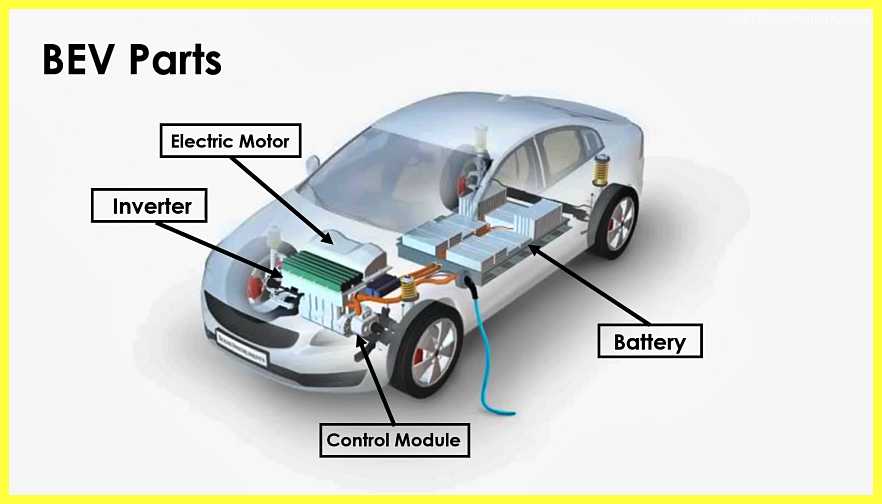
- Electric motor
- Inverter
- Battery
- Control module
the working of the battery electric vehicle is pretty simple the power for the electric motor is converted from the dc battery to ac as the accelerator is pressed a signal is sent to the controller the controller adjusts the vehicle speed by changing the frequency of the ac power from the inverter to the motor the motor then connects and leads to wheels turning through a cog if the brakes are pressed or the electric car decelerates the motor becomes an alternator and produces power that has been sent back to the battery advantages of battery electric vehicles are their simple construction operation and convenience they do not produce any greenhouse gas and do not create any noise and are beneficial to the environment electric propulsion provides instant and high torques even at low speeds these vehicles are energy efficient converting 80 percent of their energy input into moving the car in contrast gas-powered vehicles are only about twenty percent energy efficient the remaining eighty percent of the energy input is wasted in tail pipe emissions and heat recharging an electric vehicle is easy and the best part is that you no longer need to run to the fuel station to recharge your car a regular household socket can be used to charge an electric vehicle.
Features & Problems of BEV

Features of Battery Electric Vehicle (BEV) |
Problems of Battery Electric Vehicle (BEV) |
| No Emissions | Recharging points |
| Not dependent on oil | Short driving range and speed |
| Cost effective | Longer recharge time |
| Low maintenance | High price |
| Reduced noise pollution | Maintain slow and Constant
Speed for long range |
| Easy driving | Battery Replacement Problem in Future |
| Regen Feature | Error Message at High Altitude ( Hills, Mountains ) |

Examples of BEV
- Tesla Model 3
- Renault Zoe
- Volkswagen e-golf
- MG ZS EV
- Tata Nexon
- Nissan leaf
are the examples of battery electric vehicles.
Hybrid Electric Vehicle (HEV)
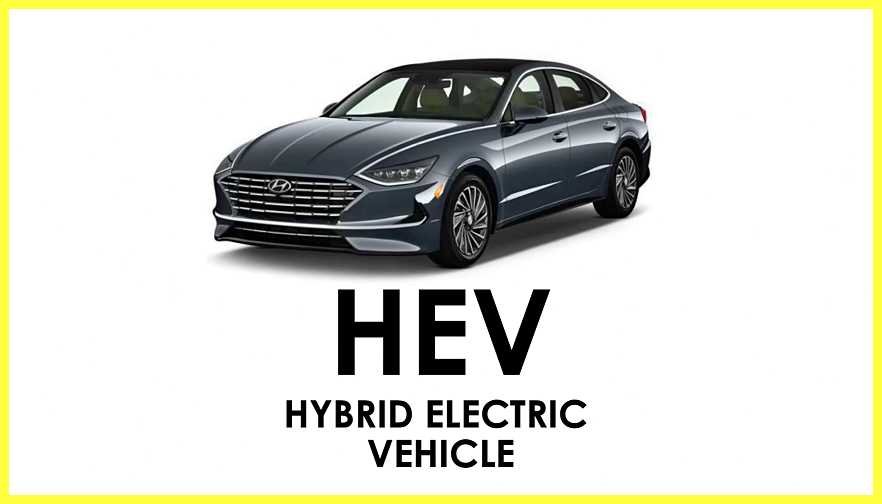
Hybrid electric vehicles are also known as:
- Series hybrid
- Parallel hybrid
- Series parallel
Based on power distribution.
Hybrid electric vehicle have both engine and electric motor the engine gets energy from fuel and the motor receives electricity from the batteries the transmission is rotated simultaneously by the engine and electric motor which drives the wheels this combination helps increase the efficiency of the engine the power distribution allows vehicles to achieve optimum power under most driving conditions a hybrid electric vehicle cannot be plugged in to charge the battery instead the battery is charged by regenerative braking and internal combustion engines and unlike most electric cars hybrid electric vehicles charge their batteries through regenerative braking regenerative braking stores the kinetic energy used to stop the car from charging its battery and help the ic engine accelerate the vehicle one type of hybrid electric vehicle the micro or mild hybrid uses a battery and electric motor to make the car run although they can’t run solely on electric power they maximize fuel economy by shutting off the ic engine during complete stops the full hybrid has the battery power to make the car move using electricity alone but usually only for short distances.
Types of HEVs
The three types of hybrid electric vehicles are Series hybrid, Parallel Hybrid, and Series parallel.
Series hybrid
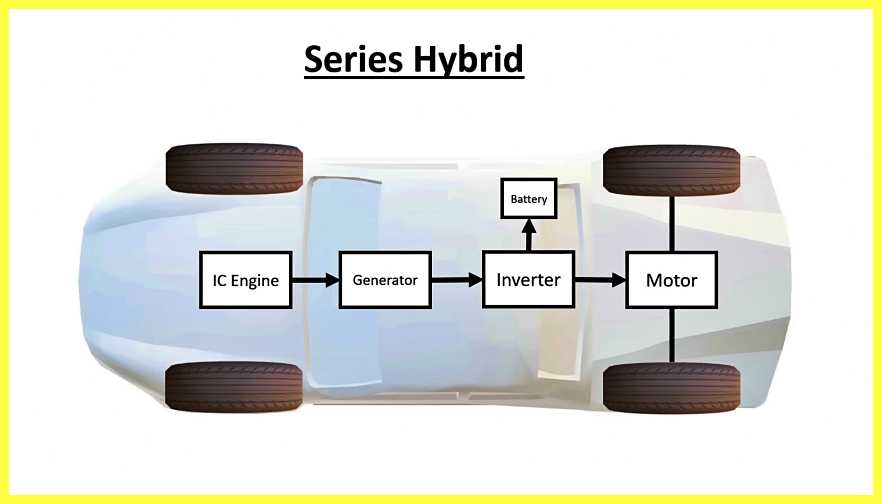
In this, the internal combustion engine drives an electric generator and not the wheels the generator not only charges the battery it also powers the motor that propels the vehicle this setup is also known as a range extended electric vehicle since the ic engine powers the battery and motor but never directly drives the wheels.
Parallel hybrid
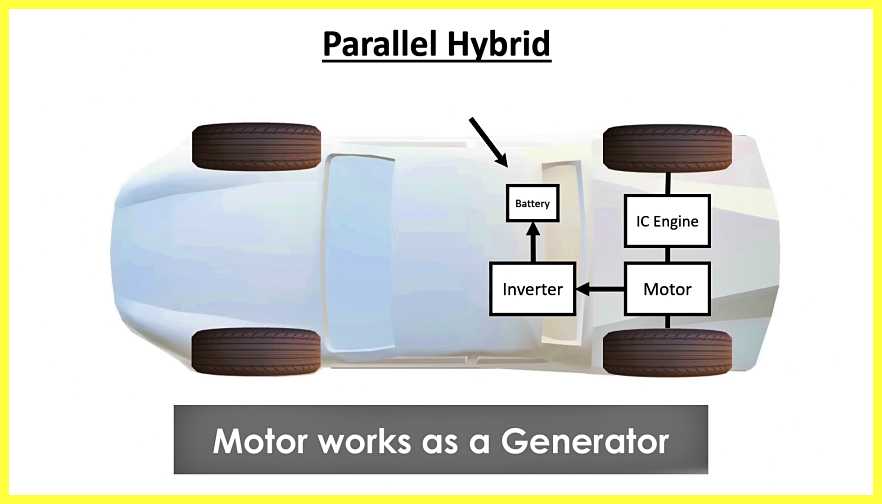
Here both an ic engine and an electric motor propel the wheels both work in tandem and deliver optimum power output the batteries in the vehicle charge when the motor works as a generator these vehicles cannot drive stand alone in pure electric mode.
Series parallel
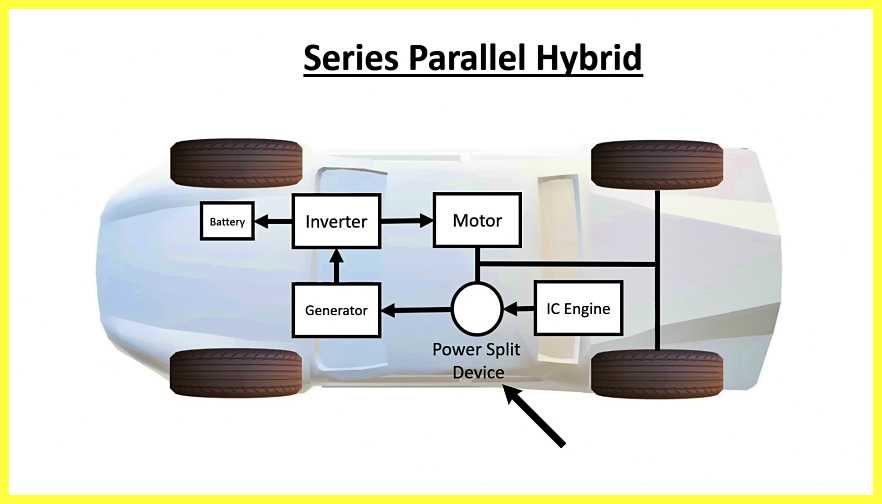
These vehicles use both the ic engine and the motor working alone or in tandem power distribution helps the vehicle operate within its optimum range as much as possible giving it high efficiency.
Working of HEV
Main components of hybrid electric vehicle:
- Engine
- Electric motor
- Battery pack with controller and inverter
- Fuel tank
- Power electronics
the working of a hybrid electric vehicle is that the fuel tank supplies energy to the engine like a regular car and the batteries run on an electric motor both the engine and electric motor can turn the transmission simultaneously it is a tremendous advantage in low-speed conditions like urban areas it also reduces fuel consumption as the engine stays off during idling periods such as in traffic jams this feature also reduces GHG emissions when a higher speed is needed the hybrid vehicle switches to the ic engine the two drive trains can also work together to improve their performance hybrid power systems are used extensively to remove turbo lag in turbocharged cars like the Acura NSX at use an electric drive train to improve mileage or performance enhancement.
Features & Problems of HEV
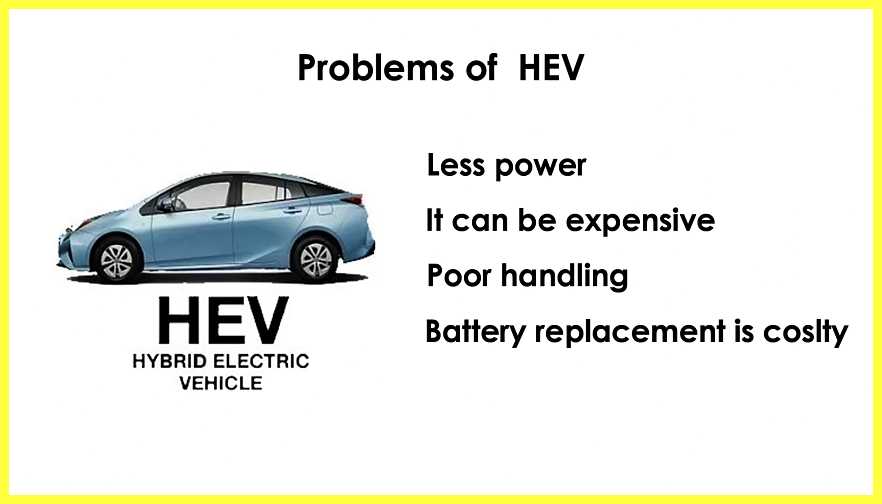
Features of Hybrid Electric Vehicle (HEV) |
Problems of Hybrid Electric Vehicle (HEV) |
| environmentally friendly | less power |
| regenerative braking system | it can be expensive |
| assistance from the electric motor | poor handling |
| smaller engines | battery replacement is costly |
| higher resale value |
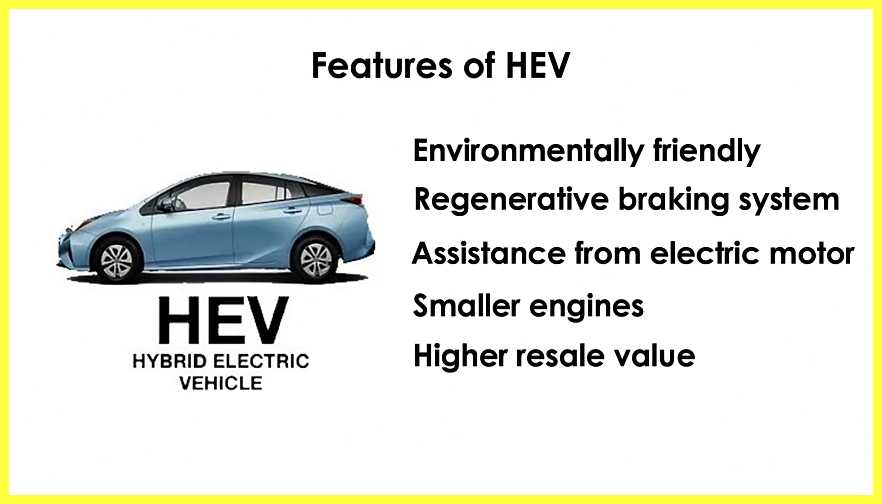
Examples of HEV
- Renault captor
- Toyota corolla
- Toyota Prius
- Skoda Octavia iv
- BMW x545e
- Mercedes e300
- Kia Nero
are examples of hybrid electric vehicles.
Plug-in Hybrid Electric Vehicle (PHEV)
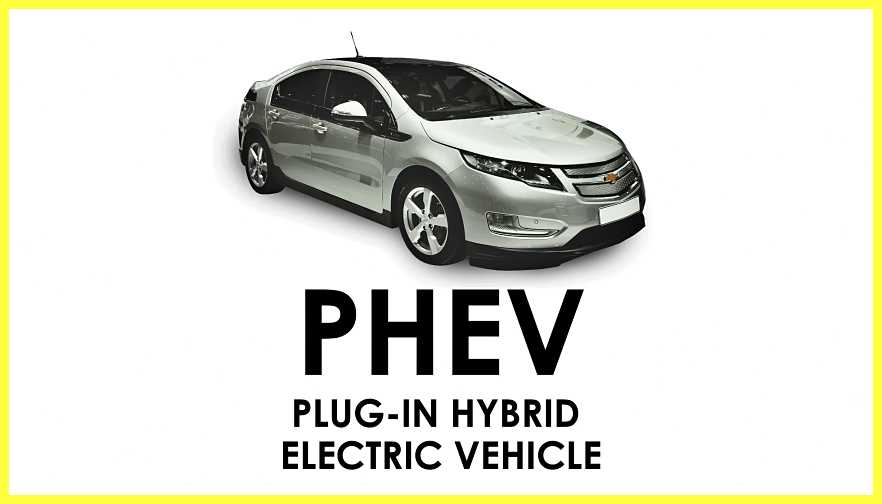
The plug-in hybrid electric vehicles are also called series hybrids plug-in hybrid vehicles expand on the concept of the standard hybrid vehicle they have both an ic engine and a battery powered electric motor this allows the battery to store enough power to feed the electric motor and in turn decrease your gas usage by as much as 60 percent this can save you time and money at the gas pump plug-in hybrids can travel up to 40 miles on electric power alone rather than a couple of miles with a standard hybrid vehicle.
These vehicles can run in at least two modes:
- first of all electric mode in which the motor and battery provide all the car’s energy.
- second in hybrid mode in which both electricity and petrol or diesel are employed.
main components of plug-in hybrid vehicles:
- Electric motor
- Engine
- Battery
- Power electronics
- Fuel tank
- Charger, if On-board model
Working of PHEV
the working of a plug-in hybrid electric vehicle is that these vehicles start up in all electric mode and use electricity until their battery pack is depleted once the battery gets drained the engine takes over and the vehicle operates as a conventional non-plug-in hybrid plug-in hybrids can be charged by plugging into an outside electric power source or by the engine or by regenerative braking when brakes are applied the electric motor acts as a generator using the energy to charge the battery the electric motor supplements the engine’s power, as a result, smaller engines can be used increasing the car’s fuel efficiency without compromising performance plug-in hybrid vehicles also have the facility to utilize regenerative braking they have the ability to run solely on electricity most of the time makes their carbon footprint smaller than that hybrid electric vehicle they consume less fuel as well and thus reduce the associated cost the vehicle market is now quite populated with these Chevrolet Volt and Toyota Prius sales shows their popularity.
Features & Problems of PHEV
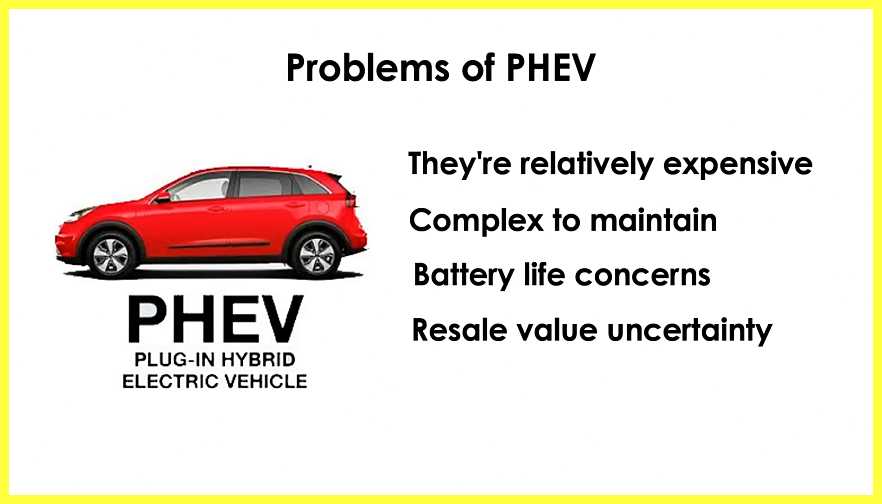
Features of Plug-in Hybrid Electric Vehicle (PHEV) |
Problems of Plug-in Hybrid Electric Vehicle (PHEV) |
| zero emission when driving on batteries | they are relatively expensive |
| fuel efficient in traffic | complex to maintain |
| they’re smooth and quiet | battery life concerns |
| reduced fuel bills | resale value uncertainty |
| tax efficient |
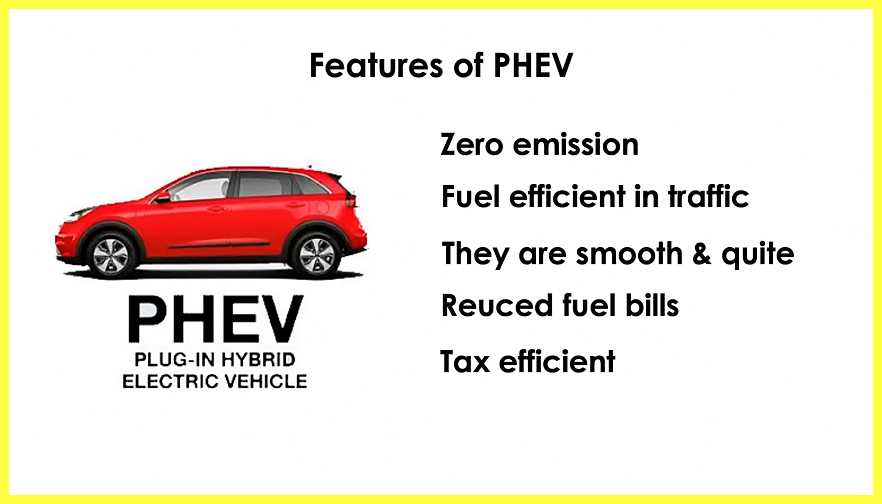
Examples of PHEV
- Porsche cayenne s e hybrid
- BMW 330e
- Chevy volt
- Chrysler Pacifica
- Mercedes c350e
- ford fusion energy
- Audi a3 e-Tron
- KIA optima
- Volvo xc90 t8
are examples of plug-in hybrid vehicles.
Fuel Cell Electric Vehicle (FCEV)
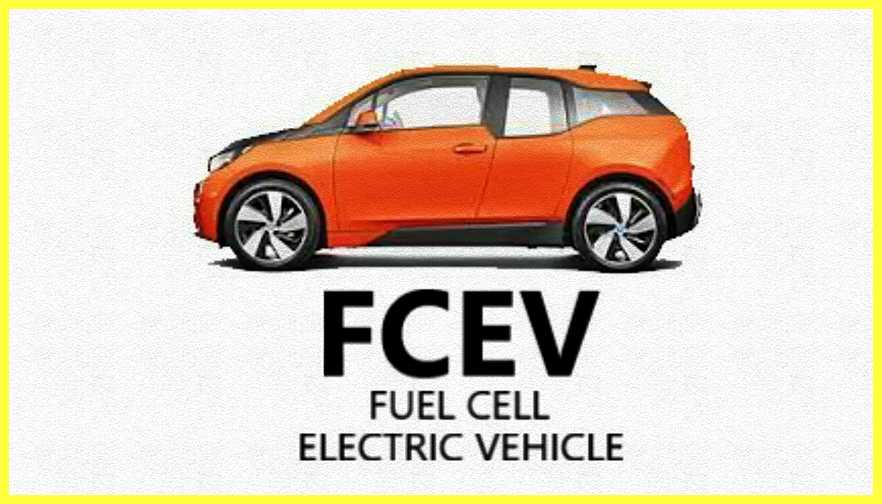
Fuel cell electric vehicles are also known as zero-emission vehicles they employ fuel cell technology to generate the electricity required to run the car the chemical energy of the fuel is converted directly into electric energy fuel cells produce electricity using a fuel cell powered by hydrogen rather than drawing electricity from only a battery hydrogen fuel cell vehicles require compressed hydrogen the most common element on the planet it takes about the same time as a gas car to fill up hydrogen is safe it carries less energy than gasoline but there’s limited infrastructure open to the public to fill a vehicle up with hydrogen.
Working of FCEV

The main components of fuel cell electric vehicles are:
- Electric motor
- Fuel cell stack
- Hydrogen storage tank
- Battery with converter and controller
- Power electronics controller
An advantage of such vehicles is that they can produce their electricity which emits no carbon enabling them to reduce their carbon footprint further than any other electric vehicle another significant advantage of these is and maybe the most important one right now refilling these vehicles takes the same amount of time required to fill a conventional car at a gas pump this makes the adoption of these vehicles more likely soon a major current obstacle to adopting this technology is the scarcity of hydrogen fuel stations.
Still, then again battery electric vehicles or plug-in hybrid electric vehicle charging stations were not a common scenario even a few years back there are also concerns regarding safety in case of flammable hydrogen leaking out of the tanks if these barriers are eliminated fuel cell vehicles may indeed define the future of cars.
Features & Problems of FCEV
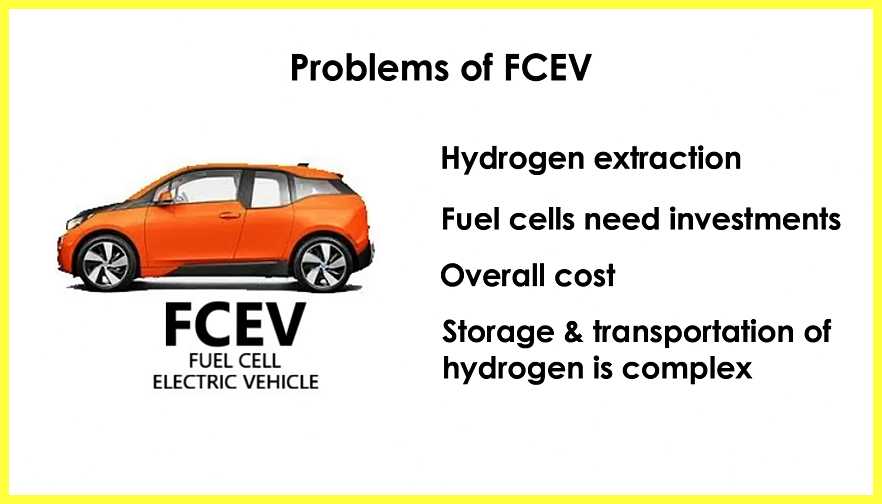
Features of Fuel Cell Electric Vehicle (FCEV) |
Problems of Fuel Cell Electric Vehicle (FCEV) |
| Renewable and readily available | Hydrogen extraction |
| Hydrogen is clean and flexible
Energy source to support zero carbon energy strategies |
Hydrogen fuel cells need investment |
| They produce almost zero emissions | Overall cost |
| Highly efficient when compared to
other energy sources |
Storage and transportation
of hydrogen is more complex |
| Fast charging times |
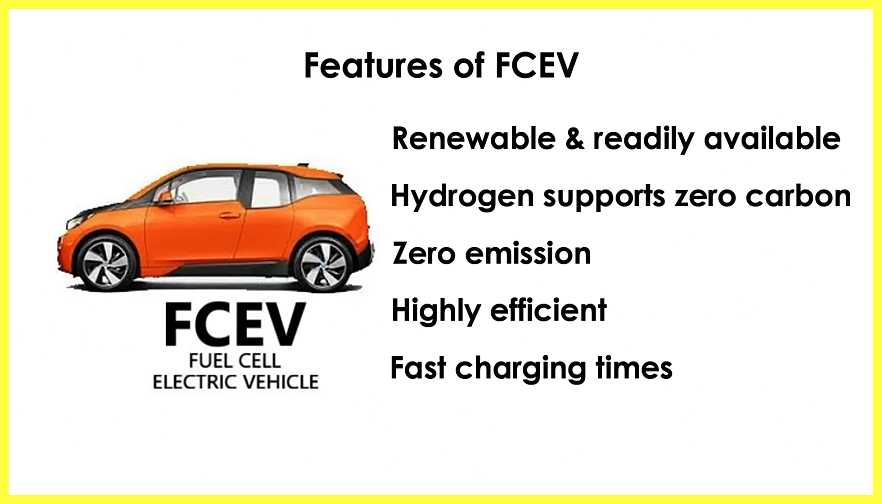
Examples of FCEV
- Toyota Mirai
- River simple rasa
- Hyundai Tucson fuel cell
- Honda Clarity fuel cell
- Hyundai Nexo
are the examples of fuel cell electric vehicles.
Conclusion
let’s take a look at brief summary of what we learned.
- Battery electric vehicles are powered entirely by electricity and are more efficient than hybrid and plug-in hybrids.
- Hybrid electric vehicles use an internal combustion engine and a battery-powered motor powertrain the engine is used to drive the car and charge the battery when it is empty these vehicles are not as efficient as fully electric or plug-in hybrid cars.
- A plug-in hybrid electric vehicle uses both an internal combustion engine and a battery the battery is charged from an external socket this means the vehicle’s battery can be charged with electricity rather than the engine these are more efficient than hybrid vehicles but less efficient than battery electric vehicles.
- In the fuel cell, electric vehicle electric energy is produced from chemical energy and the chemical energy is hydrogen.
So, what do you think of these electric vehicle types which one do you prefer let me know in the comments do you know there are different types of electric motors that were used that affect the EV performance like its range and long life. Read our Previous Articles and you Will get Lots of information About Automobiles, Electric Vehicles, Defence, etc.
FAQ:
Q: What are the 4 types of electric vehicles?
A: BEV, HEV, PHEV, and FCEV are the 4 types of electric vehicles.
Q: What are the main types of electric vehicles?
A: There are four main types of electric cars available on the market today: battery electric vehicles, hybrid electric vehicles, plug-in hybrid electric vehicles, and fuel cell electric vehicles.
Read also:
Top 10 Upcoming Us Weapons (List Update)
